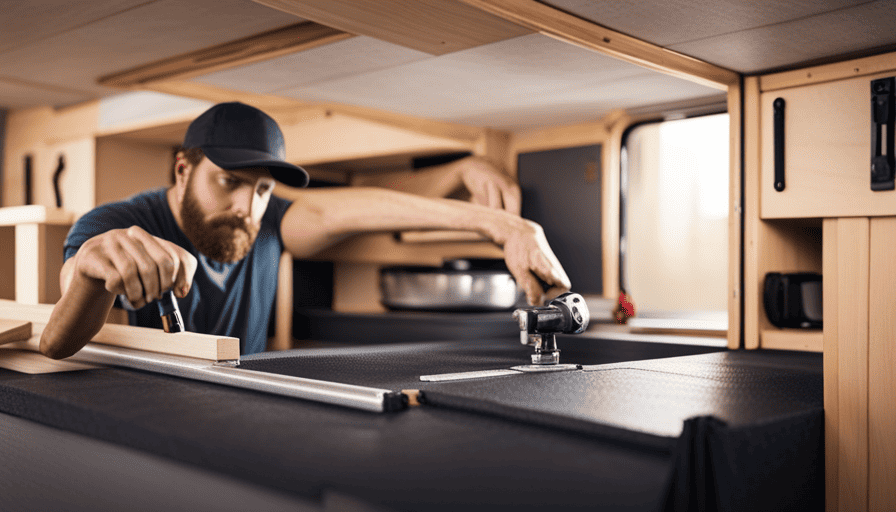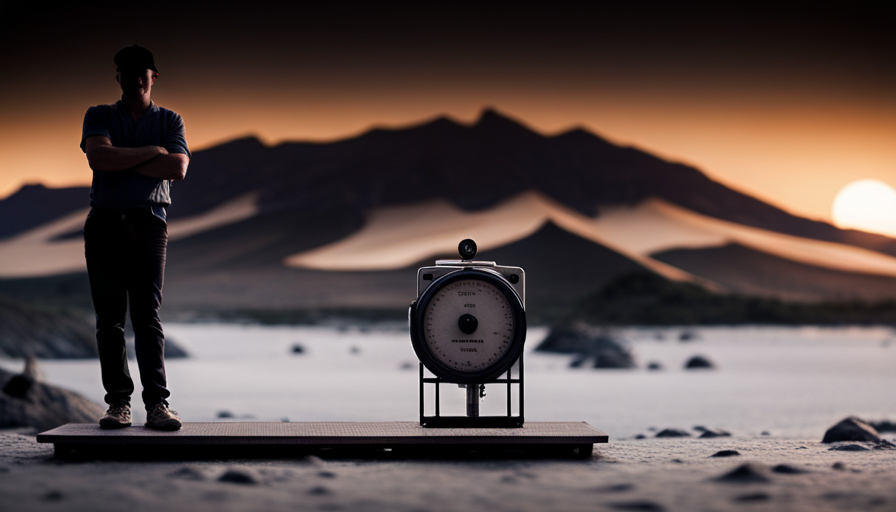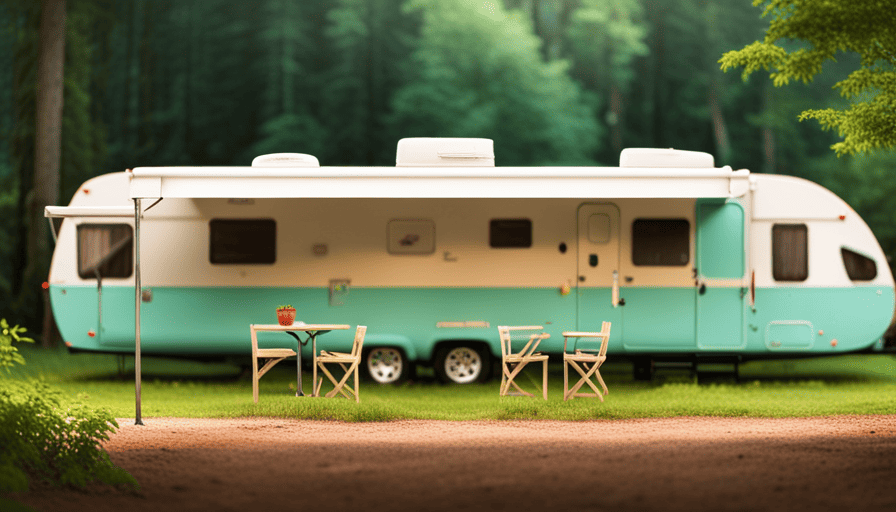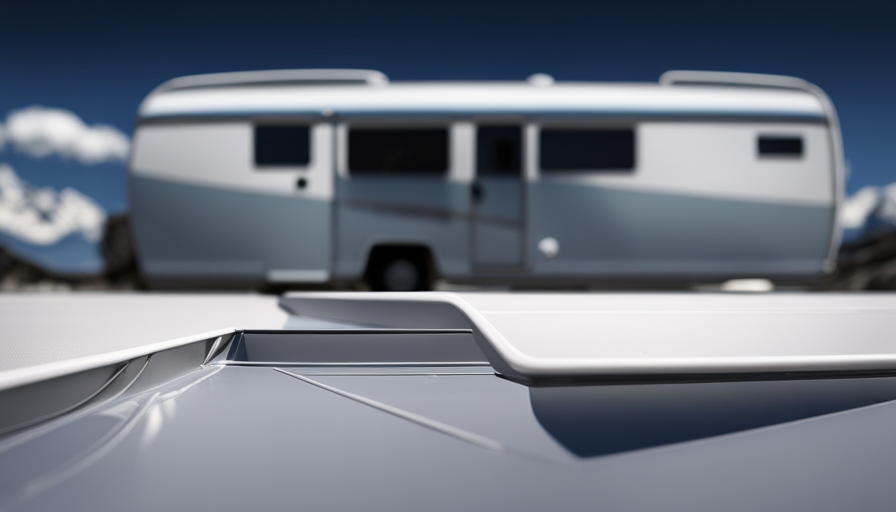Creating a truck camper is akin to setting off on an exciting journey, during which you convert a basic truck into a snug and practical rolling home. By meticulously planning, harnessing determination, and using the appropriate tools, you’re able to craft a customized camper that fits your preferences and way of traveling.
In this step-by-step guide, I will walk you through the process of building your own truck camper.
First, we will explore how to determine your needs and requirements, ensuring that your camper meets all your expectations.
Next, we will discuss how to choose the right truck for your camper and plan the design accordingly.
Gathering the necessary materials and tools is crucial before diving into the construction phase, where we will build the frame and structure of your camper.
Once the foundation is in place, we will focus on insulating and weatherproofing your camper, ensuring comfort and durability.
Customization and personalization come next, as we create a functional and inviting interior space.
Safety is paramount, so we will thoroughly test your camper before hitting the road.
Get ready to embrace the freedom of the open road, as we guide you through the process of building your very own truck camper.
Key Takeaways
- Determine your needs, requirements, and budget before starting the project.
- Carefully plan the design and layout of the camper to optimize space and storage solutions.
- Gather the necessary materials and tools for building a sturdy frame and structure.
- Install amenities and utilities such as electrical and plumbing systems, kitchenette, and comfortable bed.
Determine Your Needs and Requirements
Before you start building a truck camper, take a moment to envision your dream adventure and imagine the freedom and excitement that comes with having a personalized home on wheels.
Determining your needs and requirements is an essential first step in this process. Start by establishing your budget and deciding how much you’re willing to invest in this project.
Researching camping regulations is also important to ensure that your camper complies with all necessary rules and regulations.
Consider the size and layout of the camper that suits your lifestyle. Think about the number of people who’ll be using it and the amenities you desire. Will you need a bathroom, kitchen, or sleeping quarters?
Evaluating your storage needs is crucial to ensure that all your belongings can be accommodated.
Additionally, think about the type of terrain and climate you plan to encounter during your adventures. This will help you determine the necessary insulation and ventilation requirements for your camper.
Once you’ve determined your needs and requirements, it’s time to choose the right truck to support your camper. This decision will impact the size and weight limitations of your camper, so consider factors such as towing capacity and suspension.
With a clear understanding of your needs, you can now move forward to the next step of building your dream truck camper.
Choose the Right Truck
When selecting the ideal vehicle for your truck camper, you should consider the specific weight capacity and towing capabilities that suit your needs. The truck selection is a crucial step in building a truck camper, as it’ll determine the overall stability and performance of your rig.
First, you need to determine the size and weight of your camper, including all the gear and supplies you plan to carry. This’ll help you determine the necessary payload capacity of the truck. Additionally, you should consider the towing capacity if you plan on towing any additional equipment or trailers.
Budget considerations also play a significant role in choosing the right truck. New trucks can be quite expensive, so it’s essential to set a realistic budget and explore different options. You may consider buying a used truck that fits your requirements and is within your budget. Ensure that the truck is in good condition and has been properly maintained to avoid any unexpected issues down the road.
Choosing the right truck is just the first step towards building your dream truck camper. Once you’ve selected the ideal vehicle, you can move on to planning your camper design and layout.
Plan Your Camper Design
When planning the design of my camper, I began by sketching out my desired layout. This allowed me to visualize the placement of key components such as the bed, kitchen area, and storage spaces.
I also made sure to consider space optimization, ensuring that every inch of the camper was utilized effectively. Additionally, I researched and implemented storage solutions that would maximize the available space, such as overhead cabinets and under-bed storage compartments.
Sketch Your Design and Layout
To effectively plan your truck camper build, start by sketching out your design and layout. This step is crucial as it allows you to visualize how your camper will look and function. Here are some sketching techniques and interior layout tips to help you get started:
-
Begin by drawing a rough outline of your truck and camper dimensions. This will give you a clear idea of the available space you have to work with.
-
Consider your needs and prioritize the essential features you want in your camper. Sketch out the placement of the bed, kitchenette, storage areas, and seating arrangements accordingly.
-
Pay attention to details such as window placement, door access, and electrical outlets. These elements can greatly impact the functionality and comfort of your camper.
-
Experiment with different layout options before finalizing your design. It’s important to find a configuration that maximizes space utilization and ensures a comfortable living area.
By sketching your design and layout, you can better understand how to consider space optimization and storage solutions in the subsequent section.
Consider Space Optimization and Storage Solutions
Now it’s time to think about how to make the most of your space and find clever storage solutions in your camper. Space saving techniques are crucial when building a truck camper, as every inch counts.
One effective technique is to utilize vertical space by installing shelves or cabinets that extend all the way up to the ceiling. This allows for maximum storage capacity without taking up valuable floor space.
Another space-saving idea is to incorporate multi-functional furniture, such as a sofa that can be converted into a bed or a dining table that can be folded away when not in use.
Additionally, consider utilizing the space under the bed or seating areas for hidden storage compartments.
By implementing these space optimization strategies, you can ensure that your truck camper is both functional and efficient.
Now, let’s move on to gathering the materials and tools needed for the construction process.
Gather Materials and Tools
First, gather all the necessary materials and tools to begin building your truck camper. Start by creating a materials list to ensure you have everything you need. You’ll require plywood, insulation, screws, nails, adhesive, metal brackets, and hinges. It’s essential to choose high-quality materials that can withstand the demands of life on the road.
When it comes to tool selection, you’ll need a circular saw or jigsaw for cutting the plywood, a drill for making holes and driving screws, a tape measure for accurate measurements, and a level to ensure everything is straight and even. Additionally, a hammer, screwdriver, and utility knife will come in handy for various tasks throughout the project.
Having gathered all the necessary materials and tools, you’re now ready to move on to the next phase: building the frame and structure. This involves creating a sturdy foundation that will support the weight of the camper and provide stability while driving. By carefully following the instructions and using your gathered tools, you can construct a robust and reliable structure for your truck camper.
Build the Frame and Structure
Start by constructing a solid foundation that will become the backbone of your mobile sanctuary, ensuring a safe and secure haven on your nomadic adventures. Building the frame and structure of your truck camper requires careful consideration of materials and techniques. The materials you choose should be lightweight yet durable, such as aluminum or steel. These materials will provide the necessary strength to support the weight of the camper while keeping it light enough for easy transport.
When it comes to frame building techniques, there are a few options to consider. One popular method is to use a welded steel frame. This provides a sturdy and reliable foundation for the camper. Another option is to use a modular frame system, which allows for easy customization and adjustments. This can be particularly useful if you plan on adding or modifying your camper in the future.
To give you a better idea of the different frame building techniques, take a look at the table below:
| Frame Building Techniques |
|---|
| Welded steel frame |
| Modular frame system |
| Aluminum frame |
By carefully selecting the right materials and using the appropriate frame building techniques, you can ensure that your truck camper is sturdy and reliable. In the next section, we will discuss how to install the amenities and utilities, transforming your camper into a comfortable and functional living space.
Install Amenities and Utilities
When it comes to installing amenities and utilities in a truck camper, there are several key points to consider.
First, you’ll need to plan and install the electrical and plumbing systems, ensuring that they’re safe and efficient.
Next, you’ll want to create a functional and compact kitchenette, complete with a stove, sink, and storage space.
Finally, you’ll need to design and build a comfortable bed and storage solutions that maximize the limited space in the camper.
By carefully considering these key points, you can create a well-equipped and comfortable living space in your truck camper.
Electrical and Plumbing Systems
Incorporating both electrical and plumbing systems into a truck camper can greatly enhance its functionality and provide a comfortable living experience on the road. Here are some important considerations for installing and maintaining these systems:
-
Electrical System Installation: Start by choosing a deep cycle battery to power your camper. Install a fuse box with circuit breakers to protect the electrical system. Use marine-grade wiring and connectors for durability. Consider installing solar panels for renewable energy.
-
Plumbing System Installation: Use PEX tubing for water supply lines as it’s flexible and resistant to freezing. Install a freshwater tank and a water pump for a reliable water source. Use a greywater tank to collect wastewater. Install a water heater for hot showers.
-
Choosing the Right Appliances: Opt for energy-efficient appliances that are specifically designed for RVs. Consider a compact refrigerator, a propane stove, and a portable toilet.
With the electrical and plumbing systems in place, we can now move on to exploring kitchenette, bed, and storage solutions for our truck camper.
Kitchenette, Bed, and Storage Solutions
After successfully setting up the electrical and plumbing systems in your truck camper, it’s time to move on to the next crucial step: creating a functional kitchenette, comfortable sleeping arrangements, and efficient storage solutions.
When it comes to kitchen organization, maximizing space is key. Consider installing a compact sink with a folding faucet, a small stove, and a compact refrigerator. Utilize wall-mounted organization systems and magnetic strips to store utensils and spices.
For sleeping arrangements, a foldable bed or a convertible sofa can save valuable space during the day. Additionally, installing overhead storage compartments and under-bed storage drawers will ensure that every inch of space is utilized efficiently.
With the kitchenette, bed, and storage solutions in place, we can now focus on the next step: insulating and weatherproofing your camper, which is crucial for a comfortable and protected camping experience.
Insulate and Weatherproof Your Camper
To make sure your camper is cozy and protected from the elements, you’ll need to insulate and weatherproof it. Here are some insulating techniques and waterproofing methods to consider:
-
Insulation: Start by insulating the walls, ceiling, and floor of your camper. Use rigid foam insulation boards or spray foam insulation. This will help regulate the temperature inside and reduce noise from outside.
-
Vapor Barrier: Install a vapor barrier to prevent condensation and moisture buildup. This can be done by applying a plastic sheet or foil-faced insulation to the interior walls.
-
Seal Windows and Doors: Ensure all windows and doors are properly sealed to prevent water leaks. Use weatherstripping, silicone caulk, or rubber gaskets to create a tight seal.
-
Waterproof Roof: Apply a waterproof roof coating to protect against rain and snow. Choose a high-quality elastomeric coating that can expand and contract with temperature changes.
By following these insulating techniques and waterproofing methods, you can create a comfortable and weather-resistant camper. Once your camper is well-insulated and weatherproofed, you can move on to customizing and personalizing the interior to your liking.
Customize and Personalize Your Interior
Make your camper feel like home by customizing and personalizing the interior to reflect your unique style and create a cozy retreat on wheels. When it comes to interior design ideas for your truck camper, the possibilities are endless.
One cost-effective customization option is to use removable wallpaper or decals to add personality to your walls. This allows you to easily change the look whenever you want.
Another idea is to use curtains or blinds to not only add privacy but also to enhance the overall aesthetic of your camper. You can choose from a variety of fabrics and patterns to suit your taste.
Additionally, consider adding storage solutions such as hanging organizers or collapsible bins to maximize space and keep your belongings organized.
As for furniture, opt for multi-purpose pieces that serve dual functions, like a dining table that can also be used as a workspace.
Finally, don’t forget to incorporate personal touches such as throw pillows, rugs, and artwork that reflect your interests and make the space feel like your own.
By customizing the interior of your camper, you can transform it into a unique and inviting space.
Now, let’s move on to the next section and test and ensure the safety of your camper.
Test and Ensure Safety
Ensure your safety by conducting thorough tests and inspections to guarantee the reliability and security of your camper. To ensure the safety of your truck camper, follow these testing methods and safety regulations:
-
Electrical Systems: Test all electrical components, including the wiring, outlets, and appliances. Check for any loose connections or potential hazards that could cause electrical malfunctions or fires.
-
Gas Systems: Inspect the gas lines, fittings, and appliances to ensure there are no leaks. Use a gas detector to identify any gas leaks and address them promptly. Make sure the propane tank is securely mounted and properly vented.
-
Structural Integrity: Perform a thorough inspection of the camper’s structure, including the frame, roof, and walls. Look for any signs of damage, such as cracks or leaks. Reinforce weak areas and repair any defects to ensure the overall stability of your camper.
-
Roadworthiness: Test the camper’s suspension, brakes, and tires to ensure they’re in optimal condition. Check for tread wear, proper tire inflation, and any signs of damage. Make sure the camper is properly aligned and balanced for safe towing.
By following these testing methods and safety regulations, you can have peace of mind knowing that your truck camper is reliable and secure. Now, hit the road and enjoy your DIY truck camper adventure without any worries.
Hit the Road and Enjoy Your DIY Truck Camper
Now it’s time to hit the open road and savor every moment of your DIY truck camper adventure. After all the hard work and dedication you’ve put into building your own truck camper, it’s finally time to enjoy the fruits of your labor.
As you embark on your journey, there are a few things to keep in mind to ensure a smooth and enjoyable experience.
Firstly, make sure to double-check all the safety features of your DIY truck camper. Ensure that the brakes, lights, and tires are in good condition and functioning properly. It’s also essential to secure all loose items inside the camper to prevent them from shifting during travel.
Next, plan your route ahead of time and research campsites or RV parks along the way. This will help you find suitable places to park and rest for the night, ensuring a comfortable and convenient experience. Additionally, be mindful of any height or weight restrictions on certain roads or bridges to avoid any potential hazards.
As you hit the road, take the time to fully appreciate the freedom and flexibility that comes with a DIY truck camper. Enjoy the stunning landscapes, meet new people, and create unforgettable memories. Remember to bring along all the necessary supplies, such as food, water, and camping gear, to ensure a comfortable and enjoyable journey.
Hitting the road with your DIY truck camper is an exciting and rewarding experience. By taking the necessary safety precautions and being prepared for your adventure, you can fully enjoy the freedom and flexibility that comes with traveling in your own custom-built camper. So, embrace the open road and savor every moment of your DIY truck camper adventure.
Frequently Asked Questions
How much does it typically cost to build a truck camper?
Ah, the glorious endeavor of building a truck camper. The cost estimate for such a venture varies greatly depending on one’s taste for extravagance or thriftiness. However, a rough estimate would be around $5,000 to $20,000.
Now, let’s talk about the materials needed. You’ll require a sturdy truck bed, insulation, plywood, screws, hinges, windows, a roof, electrical wiring, plumbing, and of course, a dash of creativity.
So, roll up your sleeves and let the truck camper construction commence!
What are the legal requirements or restrictions for driving a truck camper?
To legally drive a truck camper, there are a few requirements and restrictions to consider. First, you’ll need a valid driver’s license that allows you to operate a vehicle of the camper’s size and weight. Additionally, you may need specific insurance coverage for the camper, as it’s considered a separate unit.
It’s important to check the regulations in your area, as there may be additional requirements such as safety inspections or towing restrictions.
Are there any specific weight limitations for a truck camper?
Weight limitations for a truck camper are an important consideration to ensure safe driving. According to safety regulations, the weight of the camper shouldn’t exceed the Gross Vehicle Weight Rating (GVWR) of the truck. This rating includes the weight of the fully loaded truck and the camper. Exceeding the GVWR can lead to instability, reduced braking performance, and increased wear on the vehicle. It’s crucial to consult the truck’s manual and adhere to weight limitations to ensure a safe and enjoyable camping experience.
Can a truck camper be easily removed from the truck bed?
Yes, a truck camper can be easily removed from the truck bed. To do this, you’ll need to release the camper tie-downs and disconnect any electrical or plumbing connections. Once everything is detached, you can use a camper jack system to lift the camper off the truck bed. It’s important to store the truck camper in a secure and level area to prevent any damage.
Is it possible to build a truck camper without any prior construction experience?
Yes, it’s possible to build a truck camper without any prior construction experience. The building process involves various steps such as designing, framing, insulation, electrical and plumbing installation, and interior finishing. While prior construction experience can be helpful, it isn’t necessary as long as you have a willingness to learn and follow instructions. However, having some basic carpentry skills and knowledge of tools would be advantageous.
Conclusion
After months of hard work and dedication, I can proudly say that my DIY truck camper is complete.nnFrom determining my needs and choosing the right truck to planning the design and gathering materials, every step was carefully executed.nnWith a sturdy frame and well-insulated structure, my camper is ready to withstand any weather condition.nnThe personalized interior adds a touch of comfort and style, making it feel like a home on wheels.nnNow, as I hit the road and embark on new adventures, I can’t help but feel a sense of accomplishment and excitement.nnBuilding a truck camper isn’t just about creating a vehicle; it’s about creating memories and experiences that will last a lifetime.











